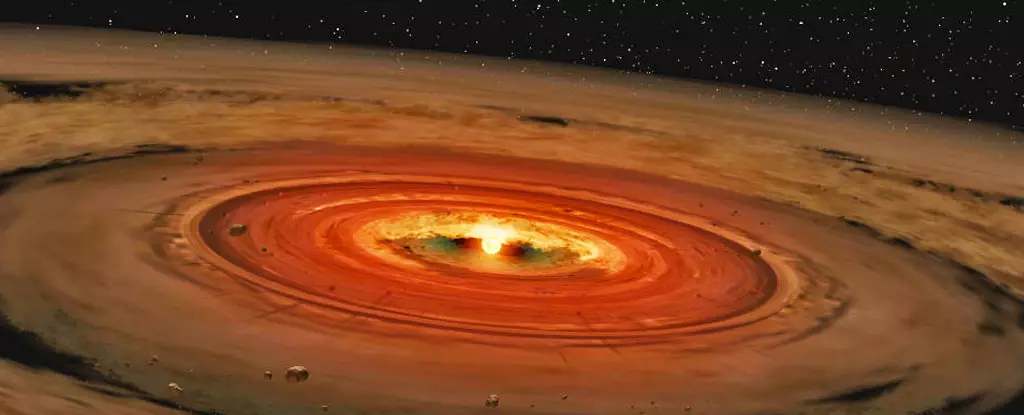The cosmic structure known as IRAS 23077+6707, discovered roughly 1,000 light-years away from Earth, has captured the attention of astronomers worldwide. Initially observed by Ciprian T. Berghea in 2016 using the Panoramic Survey Telescope and Rapid Response System (Pan-STARRS), the structure bears a striking resemblance to that of a giant butterfly. What sets IRAS 23077 apart from other celestial objects is its remarkable consistency and lack of change over the years, prompting researchers to delve deeper into understanding its nature.
Recently, two international teams of astronomers conducted follow-up observations utilizing the Submillimeter Array at the Smithsonian Astrophysical Observatory in Hawaii. The aim was to unravel the mysteries surrounding IRAS 23077 and shed light on its enigmatic existence. Through a series of research papers, the teams disclosed their groundbreaking findings, unveiling IRAS 23077 as a young star enveloped by an expansive protoplanetary debris disk – the most sizeable of its kind ever documented.
The revelation of IRAS 23077 being encircled by a massive protoplanetary disk provides invaluable insights into the complex process of planet formation. Protoplanetary disks like the one observed around IRAS 23077 serve as pivotal planetary nurseries where gas and dust conglomerate around nascent stars. Over time, these disks evolve into structured rings, eventually giving rise to a diverse array of planetary bodies spanning from rocky planets to gas giants and icy formations.
Despite the profound significance of protoplanetary disks, their observation poses inherent challenges for astronomers due to their varying orientations relative to Earth. While some disks appear “face-on” to observers, providing a clear view of their structure, others like IRAS 23077 are only visible “edge-on,” obscuring the direct light emitted by the parent star. To overcome this hindrance, researchers rely on cutting-edge technologies such as the Submillimeter Array (SMA) to analyze the dust and gas signatures emanating from these planetary nurseries.
Upon conducting intensive observations of IRAS 23077 with combined data from Pan-STARRS and the SMA, astronomers were astounded by the remarkable revelations. Kristina Monsch, a postdoctoral fellow at the CfA and SAO astrophysicist, spearheaded the SMA campaign unveiling the unprecedented scale of the protoplanetary disk surrounding IRAS 23077. The findings underscored the immense presence of dust and gas within the disk, underscoring their role as fundamental building blocks for planetary formation.
The identification of IRAS 23077 as the largest planet-forming disk ever detected sets the stage for further investigations into the mechanisms governing planet formation in extreme environments. The discovery of such celestial structures prompts astronomers to explore similar objects within our galaxy, paving the way for a deeper understanding of planetary systems in their embryonic stages. By unraveling the mysteries of IRAS 23077, researchers hope to gain new insights into the origins of our Solar System and draw parallels with exoplanet populations orbiting distant, massive stars.
The unveiling of IRAS 23077 stands as a testament to the boundless wonders of the cosmos and the relentless pursuit of knowledge that drives astronomers worldwide. As the cosmic butterfly continues to flutter in the vast expanse of space, its significance reverberates across the scientific community, sparking curiosity and igniting a quest for deeper cosmic truths.


Leave a Reply